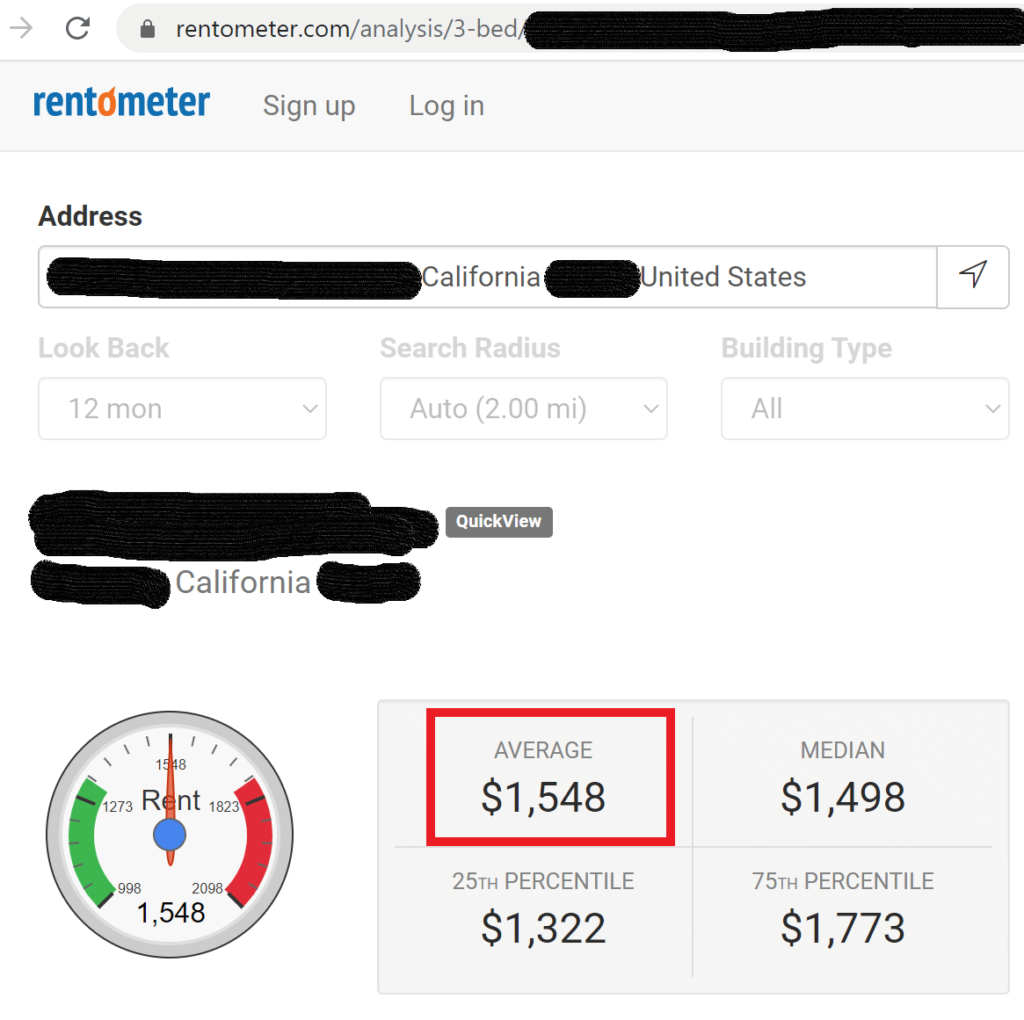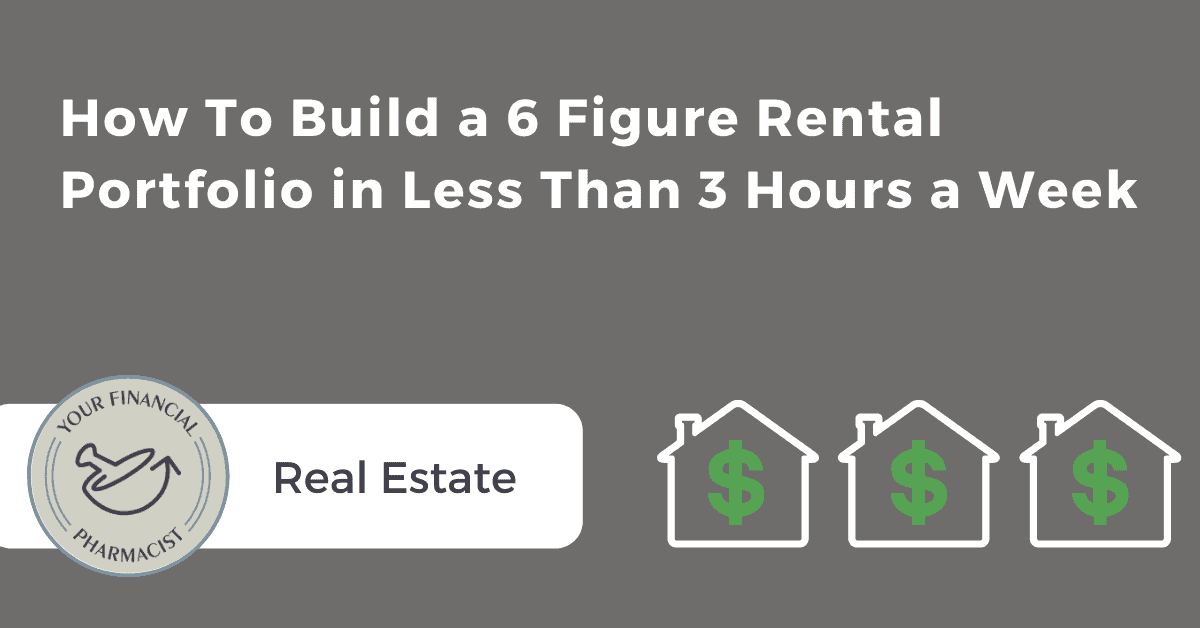How to Build a 6 Figure Rental Portfolio in Less Than 3 Hours a Week
The following is a guest post from Dr. Ryan Chaw. Ryan is a full-time pharmacist who built a rental portfolio on the side, going from zero to $10,755 per month in just 4 years. He is the founder of Newbie Real Estate Investing where he teaches others his system: how to find a college town to invest near, analyzing a deal, generating tenant leads through strong marketing tactics, and how to self-manage college tenants so everything is hands off and automated.
For most new investors, real estate is like a dragon.
.
It’s big, scary, and you’re afraid of getting burned.
Even scarier is having a bunch of immature college students renting out your bedrooms. But that’s exactly what I specialize in.
“Aren’t you worried the students will trash your house?”
This is a question I get asked all the time whenever I tell somebody that I invest in the student housing market.
My answer is always the same…
“Absolutely not. No way. Nope.”
In fact, thinking that college students will trash your house is one of the biggest myths of college town real estate investing.
Unfortunately, this myth is what holds most real estate investors back from one of the most lucrative markets in all of real estate investing: renting out by the room to college students.
You’re probably wondering right now, “Huh? I don’t understand. How’s that a myth?”
I’ll cover that later in this article, but let’s first talk about why I chose student housing.
How to Start Investing in Real Estate in a College Town
Most real estate investors leave half of their cash on the table when they rent out their house only as a single unit rather than renting by the bedrooms.
For example, here’s what one of my houses would have made if I rented it out only as one unit:

Source: Rentometer.com
But by renting out each bedroom separately, here’s what it’s actually making:

I doubled my rental income by renting by the bedroom.
Because I own 4 of these houses, I’m now making $10,755 per month in rental income!
It wasn’t always like this though. I started out as a typical pharmacist. I graduated in 2015 with my Doctorate of Pharmacy and worked two jobs as a retail and hospital pharmacist. I quickly realized that I didn’t want to work as a pharmacist until I was 65 after talking to an older pharmacist colleague. He told me, “Honestly, I just come here for a paycheck now. I wish I could have retired a lot sooner.”
I realized that while pharmacists typically make over 6 figures, this alone isn’t enough to achieve financial independence.
My inspiration to get into real estate came from my grandpa who had purchased several rentals in the SF Bay Area back in the 50s before Silicon Valley existed. As we all know, Bay Area prices went up like crazy, so Grandpa Chaw was able to retire early and live mostly off the income from his rentals.
I knew I wanted to get into real estate as soon as possible because it’s truly a time game. You buy as soon as you can, then wait for it to grow over time (as your rent goes up, your property price goes up, and you write off tons of money in taxes). When I got my pharmacist license, I decided to work a lot of overtime to save up for my first downpayment, which I used to buy my first rental in 2016.
Unfortunately, I made a lot of mistakes on my first rental and lost over $30,000!
I got a call from one of my tenants one night who said, “You’ve got to fix this. Sewage is pouring out of the kitchen sink and it’s all over the floor now.” I hired a clean-up crew and a plumber to assess the situation. It turned out that I needed to replace the whole sewage line. This cost me $9,000! I had to pay for the repairs out of pocket since this happened only 2 months after I purchased the property and I didn’t have much rental income.
On top of that, I didn’t realize the house had virtually no AC system. I ended up having to install a mini-split HVAC system which cost me $15,000.
Lastly, I had a vacancy for 8 months because I had no idea how to advertise my bedrooms. This cost me $5,200 ($650 per month x 8 months).
At the end of it all, I was feeling very depressed and discouraged. I was tired of having to take calls during my lunch breaks and late nights on weekends. I thought I had made a huge mistake investing in real estate. But I kept at it because I knew if my grandpa could do it, I could do it too. Over the next 4 years and after much trial and error, I created a system for student housing that I now teach to others. The system allowed me to cut the amount of time spent on my rentals to less than an hour a week. I’ll summarize the steps below.
There are 7 steps to creating your own student housing model that will significantly reduce the amount of time you spend on your rental properties.
Step #1: Do your research ahead of time.
Check your local city laws first to make sure everything you’re thinking of doing is legal. Some cities may require you to get a business license to rent by the bedroom. During this COVID-19 pandemic also check the college website to confirm they are scheduling on-campus learning (most colleges have some on-campus activities, whether it be with labs or experiential programs). Luckily, most graduate school students still need access to on-campus buildings to do their research.
Step #2: Choose a college based on enrollment data, college ranking, and the programs that are offered there.
You need to make sure to choose a college with a good market size to rent your bedrooms out to. Consider targeting more Ivy League type colleges because most students that go to those types of colleges received straight A’s in high school and are therefore more serious about completing their studies. Ivy League type colleges also offer opportunities for higher degrees such as medical school, pharmacy school, and nursing school. These types of students likely don’t want to waste their time partying in college. Finally, because these colleges are so popular, most of the students will be from out of the city, state, or even country, so they are definitely searching for a place to stay close to the college.
Step #3 Make your place attractive to college students.
I try to find properties that are in close proximity to campus so that I can charge premium pricing. I also look for houses with plenty of parking. This allows the college students to bring a car so they can drive to their experiential functions such as health fairs for pharmacy, nursing, and medical students. Check out the neighborhood to make sure it’s a good area so the parents feel safe letting their children stay there.
Step #4: Calculate your rental amount and know how much to charge if you put two people in one bedroom (like a couple).
If you are cheaper than on-campus housing, then you automatically have market demand. Because you provide more room and more privacy than on-campus dormitories and charge cheaper rent, it makes sense for a lot of students to just stay in one of your bedrooms. Keep in mind that putting couples into a single bedroom will allow you to charge more for that bedroom.
Step #5: Know what to look for when deciding if you can add or convert a room to a bedroom.
Whenever you can create an extra bedroom, that’s another $500-$700 in additional rental income per month. This is huge! Even adding one extra bedroom will pay for the majority of repairs and expenses that come up on your house throughout the year. Doing this step also typically allows you to at least double the amount of rental income and cash flow you make on the property.
Step #6: Market your bedrooms well to create urgency and demand.
You need to know how to create demand and urgency by highlighting the benefits of staying in your bedrooms vs on-campus housing. And, you have to advertise in the areas where your target market (i.e. college students) hang out. If you have a lot of students interested in renting out a bedroom at your property, you’ve really got the upper hand. You can choose the best tenant out of a large pool of applications. Consequently, it’s really important to get your marketing right so that you can be picky in choosing a tenant.
Step #7: Create systems and teams to help you self-manage the properties to save yourself a lot of money.
Personally, I spend less than an hour a week managing my rentals because I have systems in place for it. I empower my tenants to take on certain responsibilities. Payments are made through a phone app called Zelle since students are tech savvy. I’m able to manage my rentals while working as a full-time pharmacist job because I have these systems in place. And the best part is that I don’t have to waste 8-12% of my revenue on hiring a property manager.
Now that we covered the 7 steps, let’s go through the most important part of this process: how I completely avoid problem tenants to reduce my work load even more.
Marketing
As mentioned earlier, I do targeted marketing toward the type of students I want to attract. I’m looking specifically for the types of tenants who are more concerned about passing their midterms and finals than throwing wild house parties.
Screening
I screen social media accounts. You don’t want people who smoke, drink a lot of alcohol, do drugs, or party nonstop. Any of these types are hard a “no” for me.
Be strategic in pairing up housemates
I strategically pair up college students. This creates a balance so that even if there are a couple of immature college students in a property, they’re kept in check by the more mature, professional college students. I then also have at least a few people at every house who take on responsibilities to maintain the house. Sometimes I’ll have a tenant who may be messier, but his/her mess gets cleaned up by their parents or the other tenants.
Set yourself up for success
I minimize common space and turn those spaces into additional bedrooms. Not only does this boost my profit, but there literally will be no space to throw a large party.
That’s how simple this can be!
I believe real estate investing should be fun, simple, and enjoyable rather than this big, intimidating beast you have to slay. It also allows you to give back and provide affordable housing. If you’re interested in learning more about how student rentals can shortcut your way to financial independence, I offer a free PDF guide on how to do this and in my emails I offer you quick practical tips on how to determine the best location to invest in, red flags to watch out for, and how to create automated systems that you can implement in your own real estate portfolio at www.newbierealestateinvesting.com.
Ready to take the next step in your real estate investing journey?
One of the most important aspects of real estate investing is building your team and that all starts with finding the right real estate agent.
But as a busy pharmacist, researching, vetting, and connecting with real estate agents can be tough.
That’s why we partnered with our good friend Nate Hedrick, The Real Estate RPh, to offer a free home buying concierge service. As a pharmacist and real estate agent himself, Nate’s got the insider’s view. He has a unique perspective on the home buying process and has used it to help many pharmacists achieve their real estate dreams.
With this service, Nate helps you craft a plan that works within your budget and financial goals, connects you with a pro that you can trust, and helps you stay the course.
Click here learn more about this free home buying concierge service and to book a free call with Nate.
Current Student Loan Refinance Offers
[wptb id="15454" not found ]Recent Posts
[pt_view id=”f651872qnv”]



